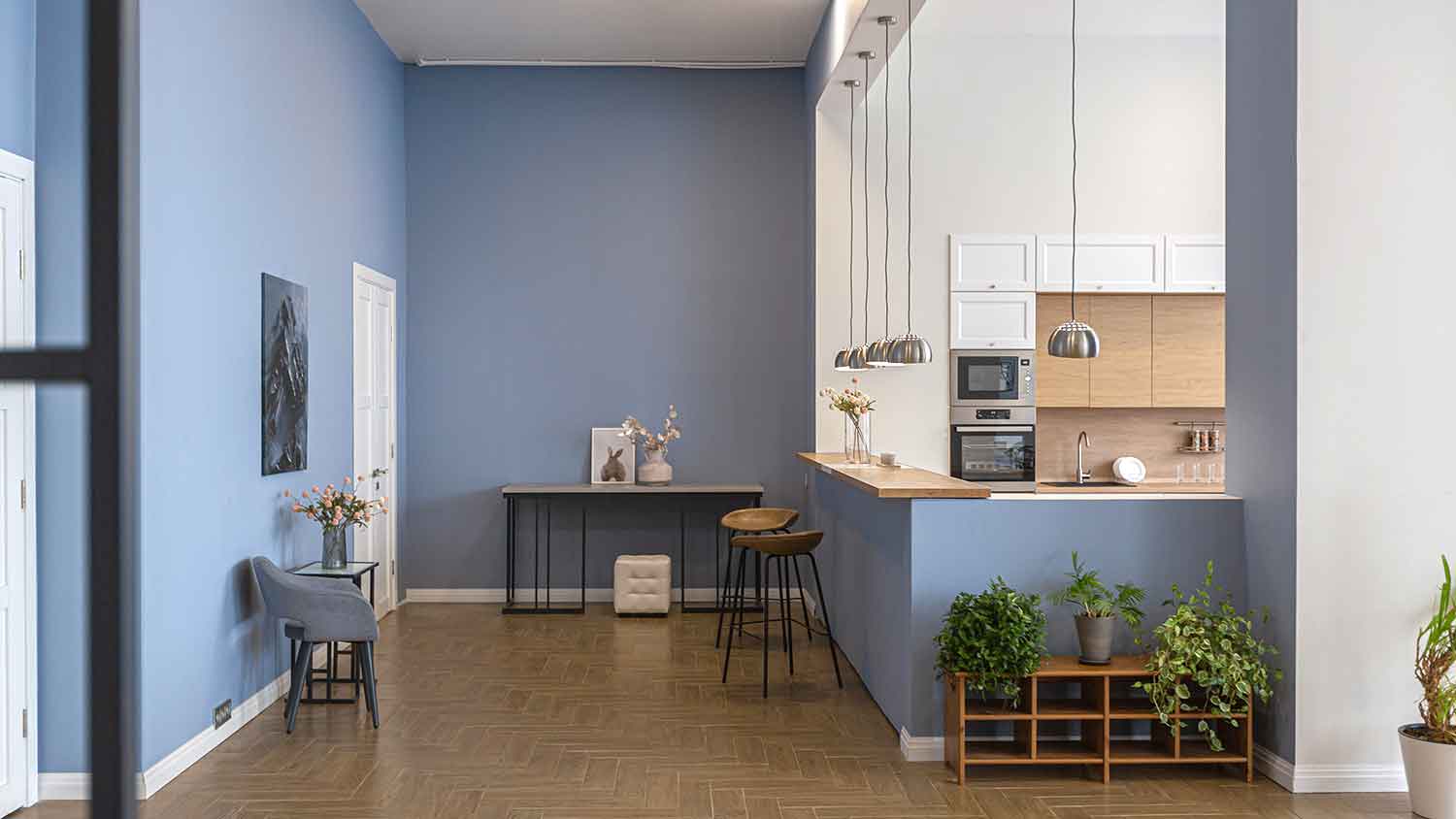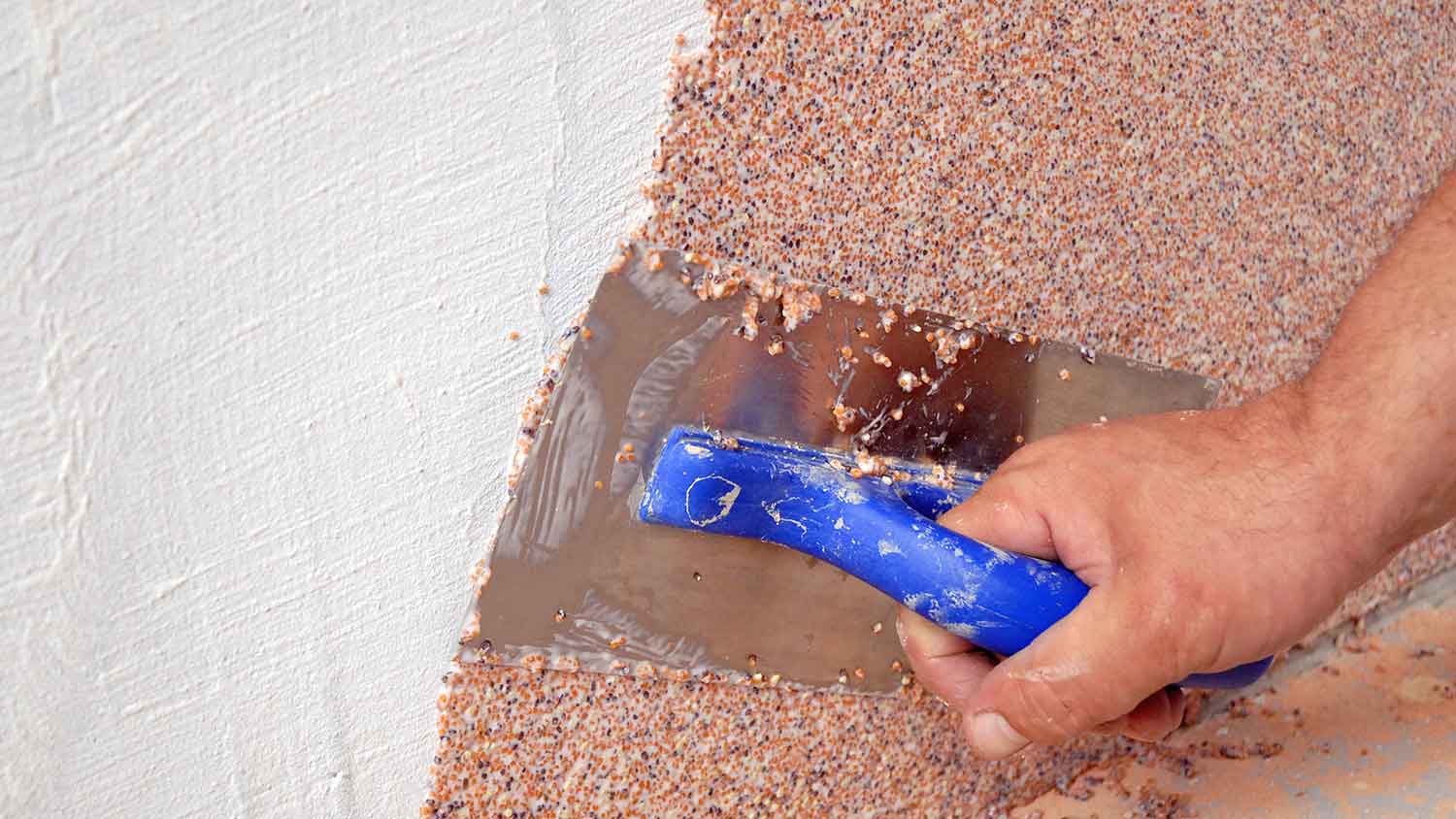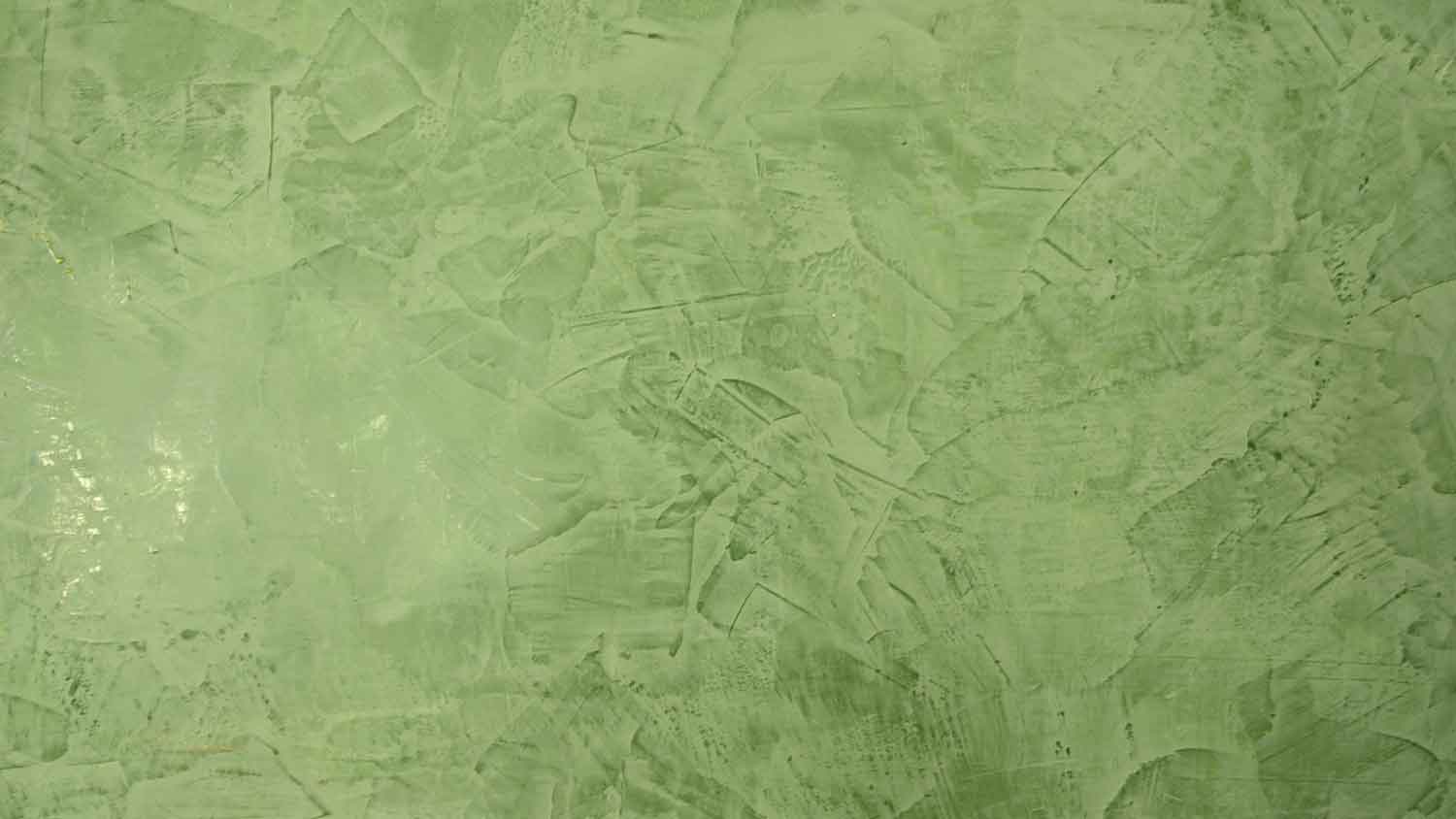7 Types of Plaster Finishes for Interior Walls
Infuse personality into your home interior


Transforming the appearance and ambiance of interior spaces often begins with the choice of wall and ceiling finishes, and plaster finishes are a timeless and versatile option. From sleek and smooth surfaces to textured and rustic designs, plaster offers a wide array of possibilities to elevate your interior design. Whether you're seeking timeless elegance, cozy charm, or a touch of luxury, learn about the different types of plaster finishes to help you make informed choices to achieve the desired look and feel in your living spaces.
1. Smooth

An interior wall design that exudes sophistication and elegance is a smooth interior plaster finish. This type of finish requires multiple coats of plaster, meticulous sanding, and attention to detail to achieve a flawless and perfectly smooth appearance. Its classic and timeless look can complement any interior space, be it contemporary, minimalist, traditional, or transitional.
Pros
Offers a timeless and sophisticated aesthetic that complements a wide range of interior styles.
Provides the perfect canvas for painting, allowing colors to appear richer and more vibrant.
Effectively conceals minor wall imperfections.
Can be highly durable and long-lasting when properly maintained.
Easy to clean, making it suitable for high-traffic areas.
Reflects light evenly, brightening up rooms and creating a sense of spaciousness.
Cons
Can be labor-intensive and time-consuming, often requiring multiple coats and sanding between layers.
Necessitates a skilled plasterer or contractor to ensure a flawless result.
Tends to be more expensive than some other wall finishes.
May be prone to hairline cracks over time in environments with significant temperature fluctuations.
Repairing and matching the texture of a smooth plaster finish can be challenging.
May not be the best choice for areas prone to moisture.
2. Textured

Choosing a textured interior plaster finish for your walls can add depth, character, and visual interest to your space. Unlike the flat surfaces of traditional plaster finishes, textured plaster creates patterns and a tactile quality that brings an organic charm to any interior. This versatile option can improve the atmosphere of both contemporary and rustic spaces.
Pros
Creates an intriguing focal point in any room.
Excellent at concealing minor imperfections in the wall surface.
Comes in a wide variety of patterns and styles.
The tactile quality can add warmth and a sense of coziness to a room.
Can be highly durable and resistant to wear and tear when properly maintained.
Cons
The surface can be more challenging to clean, as dust and dirt tend to accumulate in the textured crevices.
Certain textures may limit your choice of paint finishes.
Achieving a consistent texture can be tricky.
In some cases, textured finishes can collect dust and allergens.
Repairing damaged or chipped plaster may require intricate work to match the existing texture.
3. Sand

The use of a sand interior plaster finish is a highly favored option for those desiring to enhance their interior walls with a hint of warmth and texture. This particular finish comprises fine sand particles integrated into the plaster mixture, which yields a delicate, granulated texture. This characteristic imparts an air of rustic simplicity or modern sophistication to any given room.
Pros
Creates a subtle, tactile texture that adds depth and interest to the walls without being too overwhelming.
Effective at concealing minor wall imperfections.
Complements various interior styles.
Can evoke a sense of warmth and comfort.
Can be highly durable and resistant to wear and tear.
Works well with a variety of paint finishes.
Cons
Difficult to clean as dust and dirt may settle in the textured crevices.
Some textures may restrict your choice of paint finishes.
Can be challenging to achieve a consistent finish.
Potential dust accumulation due to the textured surface.
May not be the best choice for areas with high humidity or moisture.
4. Pebbledash

For those looking to add a unique and textured character to their interior walls, the unconventional choice of pebbledash interior plaster finish may be the perfect fit. This technique is inspired by the use of pebbledash on building exteriors, where small pebbles, stones, or aggregates are embedded into the plaster surface. The end result is a visually captivating texture that adds a touch of natural charm and authenticity to any interior space.
Pros
Offers a highly distinctive and unconventional look.
The embedded pebbles and stones create an intriguing tactile quality that adds depth and character.
Effective at concealing minor wall imperfections and irregularities.
Imparts a sense of individuality and a connection to natural elements.
Can be highly durable and resistant to wear and tear when properly applied and maintained.
Forgiving when it comes to stains and dirt, requiring minimal maintenance for a fresh appearance.
Cons
The application can be complex.
Cleaning surfaces can be more challenging than smooth finishes.
Limited paint options due to the textured surface.
The bold and rugged appearance may not suit all interior design styles.
Repairing damaged or chipped pebbledash plaster can be complex, requiring meticulous work to match the existing texture.
May not be suitable for spaces with high humidity or moisture, as they are not as water-resistant as some other options.
Plaster has a smooth and seamless look with fewer or no visible seams. The texture of plaster walls can be whatever you decide with the last coat of plaster applied. It can be smooth like glass or contoured with bumps and ridges, just like drywall mud.
5. Scrapped

Opting for a scrapped interior plaster finish can infuse a space with both refinement and rustic appeal. This method entails applying plaster to walls and then skillfully scraping or troweling it to achieve delicate ridges, waves, or lines, resulting in a nuanced and textured surface. This technique masterfully strikes a balance between smooth and heavily textured surfaces, introducing depth and character to interiors.
Pros
Creates visual intrigue.
Can effectively hide minor wall imperfections.
Adds warmth and character to the room.
Can be adapted to achieve various patterns or degrees of texture, allowing for creative customization.
Can be highly durable and resistant to wear and tear.
Cons
Achieving a consistent scrapped finish across the entire wall requires skill and experience.
Repairing damaged or chipped scrapped plaster can be challenging.
It may restrict your choice of paint finishes.
Cleaning scrapped plaster surfaces may be more complex as dust and dirt can accumulate in the textured areas.
Not ideal for all home styles.
6. Roughcast

With a finish similar to its exterior counterpart, roughcast interior plaster exudes a rugged elegance that adds a unique charm to any indoor space. To achieve this texture, plaster is applied to the walls and then aggregate materials are thrown or troweled onto the wet surface. This results in an uneven, textured appearance that creates a cozy, rustic ambiance for those seeking a distinctive interior design.
Pros
Offers a truly distinctive and unconventional look.
The uneven texture and aggregate materials create a tactile quality that adds depth.
Adept at concealing minor wall imperfections.
Can be customized with various types of aggregate materials, allowing you to achieve different textures and appearances.
Forgiving with stains and dirt, it requires minimal maintenance to maintain its charm.
Cons
Achieving a consistent finish requires skill and experience.
Complex repairs such as matching the existing texture precisely can be intricate.
Restrict your choice of paint finishes.
Not ideal for those aiming for a sleek and minimalist look.
The final look may vary based on the applicator's technique and the choice of aggregate materials.
7. Venetian

The epitome of opulent wall design lies in the Venetian interior plaster finish, which takes inspiration from the ancient artistry of Venice. The finish is achieved through the meticulous application of multiple layers of fine plaster, followed by an equally precise process of polishing and burnishing. When one knows how to apply Venetian plaster accurately, the outcome is a stunning, glossy surface reminiscent of marble, that exudes timeless elegance and luxury. Venetian plaster is the ideal choice for individuals seeking to elevate their interior spaces into refined works of art.
Pros
Provides an unmatched sense of luxury and sophistication, making it an excellent choice for high-end interiors.
Resembles marble or stone, adding depth and opulence to the room.
Can be tinted to a wide range of colors and textures.
Can be highly durable and long-lasting, maintaining its luster over time.
The reflective surface can brighten up rooms and create a sense of spaciousness by effectively bouncing light.
Cons
Skill-intensive application often necessitates hiring a professional plasterer.
The multiple layers and polishing involved can make the application process time-consuming.
Considered a premium finish and can be more expensive than other wall treatments, with the Venetian plaster cost ranging between $10–$25 per square foot, well above the average cost of plastering at between $2 and $10 per square foot.
While durable, it can be susceptible to chipping or cracking from impacts or movement.
Maintaining the polished finish may require periodic touch-ups and special cleaning methods.
May not be suitable for areas with moisture or high humidity.
How to Choose a Plaster Finish
Selecting the appropriate type of plaster finish for your interior walls requires thoughtful consideration of various factors, including your personal design preferences, desired ambiance, and practical requirements. A smooth plaster finish exudes timeless elegance and is ideal for contemporary spaces, while a sand plaster finish adds subtle warmth and texture.
Textured finishes, such as scrapped and pebbledash, add depth and character to your walls, and roughcast plaster brings rugged elegance to any interior. If opulence is what you seek, Venetian plaster boasts a luxurious marble-like sheen.
Ultimately, the best choice depends on your style, budget, and comfort level with maintenance. It's important to note that the skill of the plaster applicator and compatibility with the moisture levels of your space are critical factors to consider when choosing the ideal plaster finish.





- Types of Plaster and Use Cases for Each
- What Is Behind Your Lath and Plaster Walls?
- How Long Does Plaster Take to Dry?
- Why Do Plaster Walls Crack?
- Plaster vs. Drywall: Pros, Cons, and Costs
- Can You Paint Over Plaster Walls? Yes, But Take These Steps First
- What Is Venetian Plaster? And What Makes It Unique?
- Can You Drywall Over Plaster? And Should You?
- Drywall vs. Plaster: How to Tell Which Walls Are in Your Home
- Stucco vs. Plaster: Which Should You Pick For Your Home Exterior?










